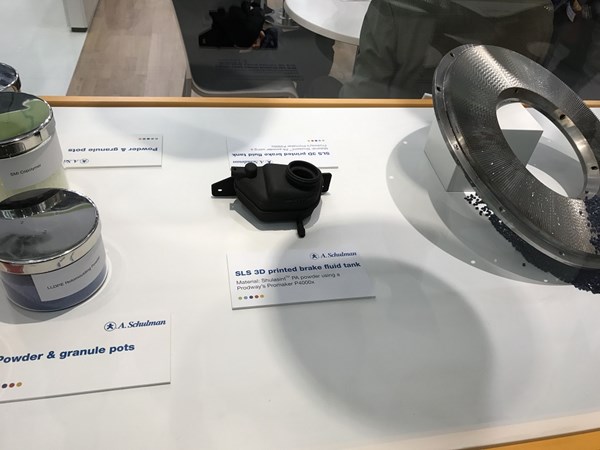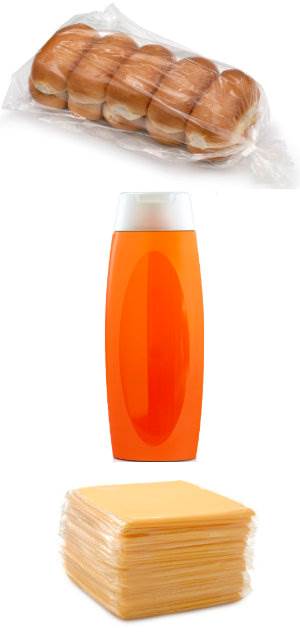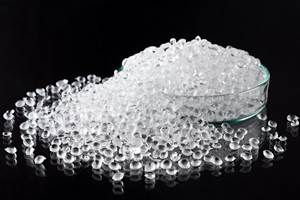K2016 Materials and Additives from Polyscope, A. Schulman and Dow Corning
Polyscope, A. Schulman, Dow Corning highlighted new products and applications along with soon-to-be launched materials and additives.
Polyscope, A. Schulman, Dow Corning highlighted new products and applications along with soon-to-be launched materials and additives.
If you’ve ever attended a K show for the entire duration, you know how tiring it can be, but the saving grace is always the excitement of discovering new technologies and applications.
Within the last 48 hours of K 2016, I had the opportunity to interview three materials and additives companies, and they were all set to launch new products within the coming year.
• Polyscope (U.S. office in Novi, Mich.) showcased the latest in its expanded range of Xiran IZ terpolymers based on styrene, maleic anhydride, and N-phenylemaleimide, for use as heat-booster modifiers of ABS, ASA, PS, and SAN for automotive and appliance components (read more from PT, Sept. 2016). The company has also developed a new SMA copolymer specifically for higher heat PMMA automotive LED applications, as well as exploring non-auto PMMA applications.
Even newer, with no brand name assigned to them as yet, are new SMA copolymers developed as compatibilizers for nylon/ABS and PC/ABS that ensure there is no loss of heat resistance when such resins are blended. These are only the starter products as Polyscope is exploring the use of these copolymers in other resin blends, as well as SMA copolymers that can support both biopolymer compounds and recycled materials.
And, for additive manufacturing, Polyscope is working on developing filaments for FDM 3D printing technology. To be launched within the first half of 2017, the initial offerings will include ABS, which the company says, surpasses existing ABS filaments in terms dimensional stability and adhesion between layers. Filaments for use with SLS technology are also being explored.
• A. Schulman (Akron, Ohio), as was the case with many other materials suppliers, segmented its exhibits by the key market sectors it serves. The company has put a lot of emphasis on its colored compounds technology—color effects, touch, feel, sound—and its new Color Trending Book presents the options available for automotive, appliances, toys, cosmetics, and more.

This year, the company was awarded the grand prize award for a body exterior part by the European section of the SPE Automotive group. The part was an in-mold color (vs. painted) front and rear bumper in a silver color made from PP/nanoparticle TPO.
Since its 2015 acquisition of Chicago-based Citadel Plastics Holdings, the company has been working to bring that acquired knowhow in thermoset composites to thermoplastics. One focus is in long-glass-fiber thermoplastic composites based on PP, nylon, and PBT (with PET as a blend) for structural applications.
The company is exploring both carbon fibers for strength and stiffness and aramid fibers for abrasion resistance. Senior VP and General Manager Heinrich Lingnau told me that, in collaboration with the University of Aachen and IKV, the company is looking at alternative processing techniques for both long glass and carbon fibers, which can break easily during injection molding. “We’re exploring mass-molding technology—ways to insert in-laid carbon fiber tape followed by overmolding, for example.”
Further on composites, Lingnau says the company is aiming to bring its Quantum Engineered Structural composites (ESC) thermoset-carbon fiber sheet technology to thermoplastics. “We have developed thermoplastic powders and are looking to marry these with the sheet technology to make organosheets.”
A.Schulman is also making progress toward commercialization of its Schulasint nylon 12 powders for SLS additive manufacturing.
• Dow Corning (Midland, Mich., now part of Dow Chemical), discussed the commercial expansion of its two-year-old patented silane-based reinforcement technology that is said to bring PP up to nylon performance.
Company representatives also discussed their new, high-molecular-weight, long-chain, non-migratory silicone slip agent specifically developed for L/LLDPE for fill-form-seal film food packaging, launched this year. In the works for introduction next year is a silicone-based slip agent specifically developed for improving BOPP film processing.
Dow Corning has been selling to compounders, particularly of PC, a silicone that acts as both a flame retardant (non-drip with excellent charring) and a chain extender. PolyOne has found it to be effective in its PP/wood fiber compounds. In 2017, a similar product that is specifically tailored to nylons 6 and 66 will be ready for launch.
Related Content
PFAS-Free Processing Aid for Blown Film Extrusion
Ampacet’s new processing aid said to perform as well as fluoro-based PPAs in blown film.
Read MoreMasterbatches Reduce Gloss in PLA and PETG 3D Printed Products
Insight Polymers & Compounding’s two low-gloss additive masterbatches shown to boost appearance of 3D printed objects.
Read MoreK 2022 Additives & Materials: Sustainability in the Lead
Nearly all of the new additives highlighted at the big show are aimed at enhancing recyclability of commodity resins and some volume engineering resins such as nylon and PC. A few new materials, on which we had not previously reported, also surfaced at K 2022.
Read MoreUnderstanding the ‘Science’ of Color
And as with all sciences, there are fundamentals that must be considered to do color right. Here’s a helpful start.
Read MoreRead Next
Why (and What) You Need to Dry
Other than polyolefins, almost every other polymer exhibits some level of polarity and therefore can absorb a certain amount of moisture from the atmosphere. Here’s a look at some of these materials, and what needs to be done to dry them.
Read MoreLead the Conversation, Change the Conversation
Coverage of single-use plastics can be both misleading and demoralizing. Here are 10 tips for changing the perception of the plastics industry at your company and in your community.
Read More























